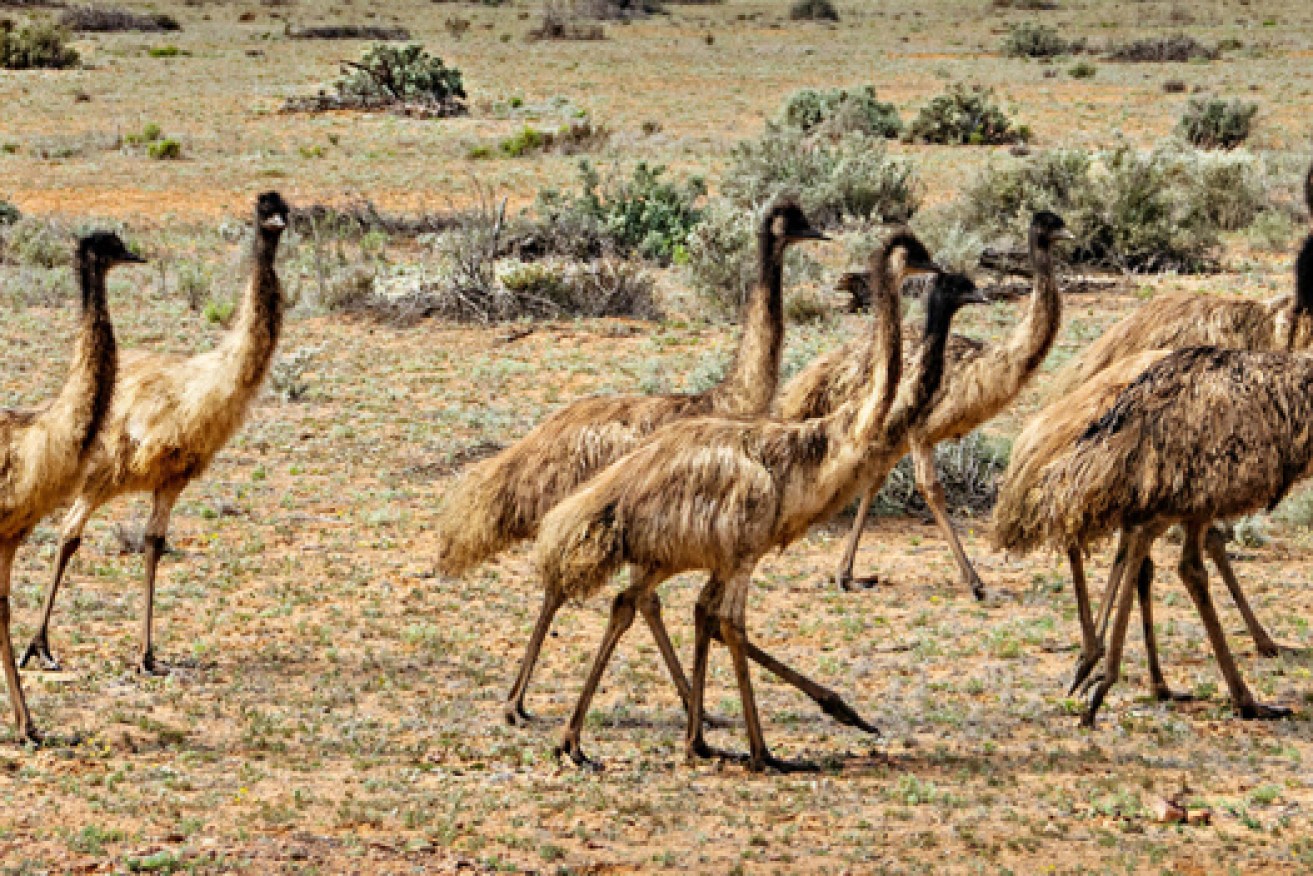Small emus’ size related to island homes
The body size of small emus that once lived on Australia’s isolated offshore islands correlated to the size of the islands they inhabited, new research reveals.

Emus in the Flinders Ranges. Photo: Tim Lindner
Researchers from the University of Adelaide have analysed the DNA and leg bone measurements of now extinct small emus that once lived on Kangaroo Island, Tasmania and the nearby King Island.
They found the small-bodied island emus, which evolved from the same species as the mainland emu, became isolated after sea-levels rose about 10,000 years ago.
“We took size measurements of the leg bones and it looks like the size of these bones corresponds to the size of the islands where [the emus] lived,” lead author Dr Vicki Thomson said.
“The leg bones, a measure of overall body size, show size differences from the smallest found on King Island, to the largest on the mainland, with Kangaroo Island and Tasmanian emus in between.
“The smallest, the King Island emus, are typically two-thirds the size of our mainland emus, with others ranging upwards according to the size of their island.”
Thomson said researchers believed the island emus were smaller in stature as they weren’t able to walk long distances like their larger mainland relatives.
“We hypothesise they reached optimal size for the island because we don’t know that they could have eventually grown bigger to maybe the size of the mainland emu.”
The animals became extinct after Europeans arrived in the 19th century.
“Maybe they didn’t have the predator response of the mainland emu, which tend to kick if others come near,” she said.
The research will be used to help understand how species evolve and adapt to changing climates.
“With climate change and environmental changes now impacting many species today it’s interesting to know how the emu species has had to adapt.”
Thomson is also researching dwarfism and gigantism in offshore island tiger snakes, which also vary in size depending on the island where they live.
“This might be due to different prey types – where the giant tiger snakes eat large muttonbird chicks, other smaller snakes might only have small lizard species to prey on.”
Findings from the small emu study were published today in the Biology Letters journal.




